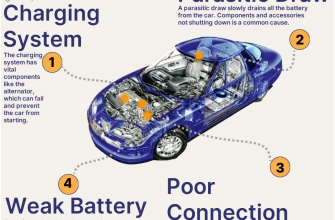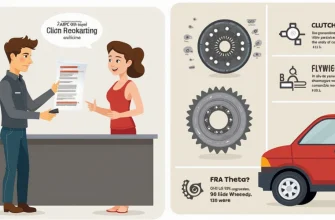- Legal Ramifications
- Performance Impact
- Engine Life Concerns
- Environmental Considerations
- Possible Exceptions
- Legality
- Performance
- Engine Life
- Legal Issues
- Performance Effects
- Engine Longevity
- Legality?
- Performance?
- Engine Life?
- Legal?
- Engine?
- Cost Considerations
- The Role of Oxygen Sensors
- Alternatives to Removal: Repair and Replacement
- Tuning and ECU Modification
Legal Ramifications
Driving without a catalytic converter is illegal in many jurisdictions. Most countries have emission standards. Removing or disabling it violates these laws.
Performance Impact
While some believe removal improves performance, modern cars often experience decreased performance. The ECU relies on sensor data. Removing the converter disrupts this.
Engine Life Concerns
Removing the converter can shorten engine life. It helps reduce harmful emissions, including carbon monoxide. Without it, these pollutants can damage engine components.
Environmental Considerations
Catalytic converters significantly reduce harmful emissions. Driving without one contributes to air pollution.
Possible Exceptions
Some older cars may not have originally been fitted with converters. Check local regulations for exemptions.
Legality
It’s usually illegal. Emission laws mandate them.
Performance
Modern cars suffer; ECU relies on it.
Engine Life
Reduced life due to increased pollutants.
Legal Issues
Generally illegal due to emission standards.
Performance Effects
May reduce performance in modern vehicles.
Engine Longevity
Potentially shortens engine life.
Legality?
Usually illegal!
Performance?
Often worse.
Engine Life?
Can shorten it.
Often Illegal
Hurts more now
Damage Risk
Legal?
Nope!
Down!
Engine?
Bad!
No.
Bad.
Worse.
Driving without a catalytic converter is illegal in many jurisdictions. Most countries have emission standards. Removing or disabling it violates these laws.
While some believe removal improves performance, modern cars often experience decreased performance. The ECU relies on sensor data. Removing the converter disrupts this.
Removing the converter can shorten engine life. It helps reduce harmful emissions, including carbon monoxide. Without it, these pollutants can damage engine components.
Catalytic converters significantly reduce harmful emissions. Driving without one contributes to air pollution.
Some older cars may not have originally been fitted with converters. Check local regulations for exemptions.
It’s usually illegal. Emission laws mandate them.
Modern cars suffer; ECU relies on it.
Reduced life due to increased pollutants.
Generally illegal due to emission standards.
May reduce performance in modern vehicles.
Potentially shortens engine life.
Usually illegal!
Often worse.
Can shorten it.
Often Illegal
Hurts more now
Damage Risk
Nope!
Down!
Bad!
No.
Bad.
Worse.
Cost Considerations
While removing the catalytic converter might seem like a cost-saving measure, consider the long-term expenses. Fines for violating emission laws can be substantial. Furthermore, the increased wear and tear on your engine can lead to costly repairs down the line. Replacing damaged engine components due to increased pollutant exposure will far outweigh any perceived initial savings.
The Role of Oxygen Sensors
Modern vehicles utilize oxygen sensors (O2 sensors) both before and after the catalytic converter. These sensors provide crucial feedback to the ECU about the efficiency of the combustion process and the effectiveness of the catalytic converter itself. Removing the converter throws off these readings, potentially causing the ECU to enter a “limp mode,” restricting engine performance to prevent further damage. This can manifest as reduced acceleration, poor fuel economy, and difficulty maintaining speed.
Alternatives to Removal: Repair and Replacement
If your catalytic converter is faulty, removal should never be the first option. Explore repair or replacement. Catalytic converters can sometimes be repaired, depending on the extent of the damage. If repair isn’t feasible, consider purchasing a replacement. While replacement can be expensive, it’s the legally compliant and environmentally responsible solution. Look for aftermarket catalytic converters that meet emission standards in your region, which can be a more affordable alternative to OEM (Original Equipment Manufacturer) parts.
Tuning and ECU Modification
Some individuals attempt to circumvent the ECU’s reliance on O2 sensor data by modifying the engine’s computer through aftermarket tuning. However, this practice is often illegal and can void your vehicle’s warranty. Furthermore, improper tuning can lead to severe engine damage, rendering the “performance gains” irrelevant.
Driving without a catalytic converter carries significant legal, environmental, and mechanical risks. While the allure of perceived performance gains or cost savings might be tempting, the potential consequences far outweigh any benefits. Repairing or replacing a faulty converter is the responsible and legally compliant option, ensuring the longevity of your engine and contributing to a cleaner environment.










Great article! It’s important for people to understand the consequences of such actions. The environmental considerations section is especially crucial.
This article is a fantastic resource. It covers all the essential aspects and provides a clear warning against removing the catalytic converter. Highly recommended!
Excellent summary! The concise points about legality, performance, and engine life are spot on. It’s good to see a balanced perspective on this topic.
I found this article extremely helpful. The explanation of how the ECU is affected by removing the converter was particularly insightful. Thank you!
This article is excellent! It’s a great reminder of the importance of catalytic converters and the negative impacts of removing them. Well done!
This article is incredibly informative! I appreciate the clear breakdown of the legal, performance, and environmental impacts. A must-read for anyone considering removing their catalytic converter.
A very comprehensive and well-organized article. The points are clear, concise, and easy to remember. A valuable piece of information!
Very well-written and easy to understand. The ‘Legality? Nope!’ and ‘Engine? Bad!’ sections are particularly effective in getting the message across. Great job!